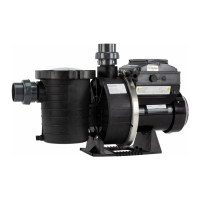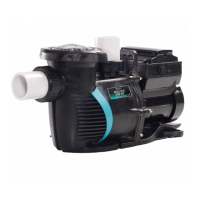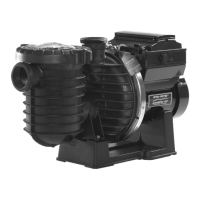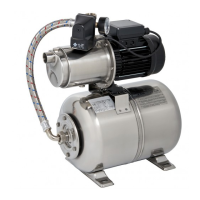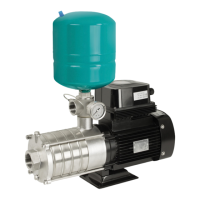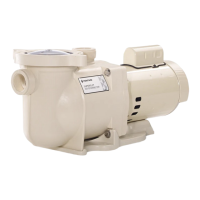INSTALLATION AND REMOVAL 3/5
PUMP DISASSEMBLY
WARNING - Always disconnect power to the pool pump at the circuit breaker and
disconnect the communication cable before servicing the pump. Failure to do so could
result in death or serious injury to serviceman, pool users or others due to electric shock.
Read all servicing instructions before working on the pump.
!
WARNING - DO NOT open the strainer pot if pump fails to prime or if pump has been
operating without water in the strainer pot. Pumps operated in these circumstances may
experience a build up of vapor pressure and may contain scalding hot water. Opening the
pump may cause serious personal injury. In order to avoid the possibility of personal injury,
make sure the suction and discharge valves are open and strainer pot temperature is cool
to touch, then open with extreme caution.
!
CAUTION - Be sure not to scratch the polished shaft seal faces; seal will leak if faces are
damaged.
!
Illustrations refer to WhisperFlo IntelliFlo VSF. Disassembly will be slightly different on other
models. Please refer to our spare part list or website (www.pentairpooleurope.com) for specific
assembly drawings.
To remove and repair the pump mechanical seal, perform the following procedures:
1. Switch off the pump circuit breaker at the main panel.
2. Disconnect the RS-485 communication cable from the pump (if connected to pump).
3. Drain the pump by removing the drain plugs. No tools required.
4. Remove the six bolts or band clamp that hold the housing (strainer pot/volute) to the rear
subassembly.
5. Gently pull the two pump halves apart, removing the rear subassembly.
6. Loosen the holding screws located on the diffuser (not applicable for UltraFlow-VSD).
7. Hold the impeller securely in place and remove the impeller lock screw. The screw is a left-
handed thread and loosens in a clockwise direction.
8. Use a flat blade screwdriver to hold the motor shaft. The motor shaft has a slot on the end
which is accessible through the center of the fan cover.
Note: An adjustable wrench may be used to hold the screwdriver shaft in place. Use locking
pliers instead if your screwdriver has a round shaft.
9. To unscrew the impeller from the shaft, twist the impeller counterclockwise.
10. If the seal needs replacing, remove the white-colored, rotating portion of the mechanical
seal from the impeller.
11. Remove the four bolts from the seal plate to the motor.
12. Place the seal plate face down on a flat surface and tap out the mechanical seal.
13. Clean the seal plate, seal bore, and the motor shaft.
42
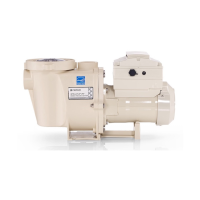
